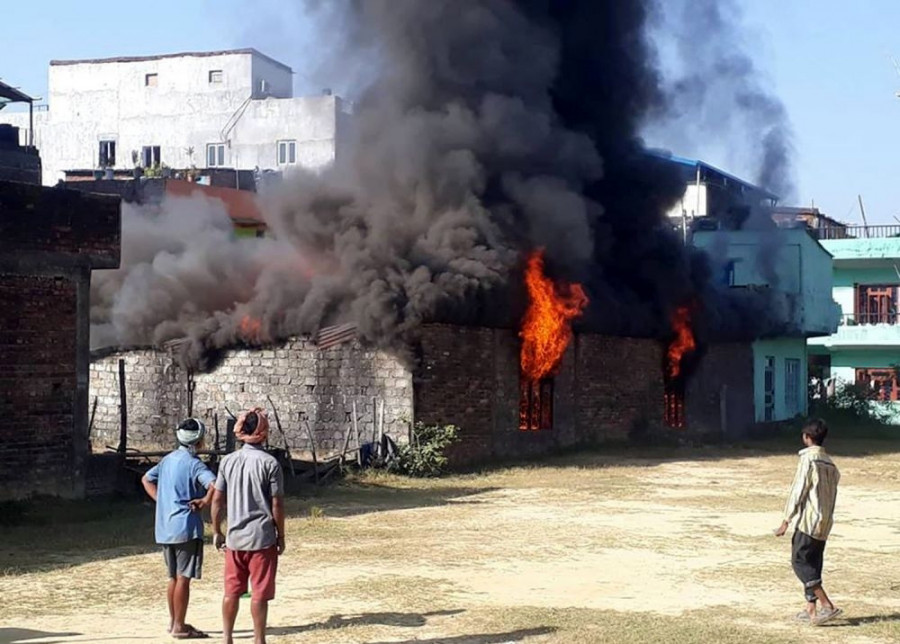Editorial
Disasters waiting to happen
Nepal’s disaster preparedness and response mechanism is pretty disastrous.
Last Tuesday, a huge fire at Ashmita Cotton Industry in Baglung Municipality suffered fire, which damaged properties worth Rs1 million. This was because the only fire engine in the municipality had not been fully functional and required repair. What’s more, the municipality lacked a skilled firefighter to use the fire engine. The chief administrative officer of the municipality audaciously said the water spraying system in the fire engine was defunct, and that there was only one driver who knew how to handle it. This, despite the residents of Baglung bazar demanding more fire engine and skilled firefighters for a long time.
The fact that the sole fire engine in the municipality has no dedicated parking space and that its parts have been stolen exposes the dilapidated state the municipality’s fire fighting system is in. Baglung Municipality, though, is hardly an exception; rather, it is an epitome of the recklessness on the part of authorities when it comes to disaster preparedness in Nepal. This exposes how the capacity building of firefighters and fire stations has remained on the back burner, leading to hundreds of preventable disasters each year. Local governments across the country lack resources to tackle disasters including home fires and forest fires. While several urban municipalities usually have one fire engine and associated staff, they are often in disrepair and are of no use.
Most disasters are avoidable if proper preventive measures are taken in time. Home fire is one of the major causes of injuries and deaths in the world. Winters are especially more dangerous, as people build fire or use high-voltage electric heaters to keep themselves warm. But in doing so, they fail to adopt safety measures, leading to burning and explosion. To prevent that, the government must use the resources at its disposal to inform people about the safety measures to be followed. A depressing lack of accountability on the part of authorities means that people are neither trained to remain safe nor are they provided with any support when they are vulnerable. The government must use all its mechanisms, including federal, provincial and local governments, to conduct timely assessments of vulnerability in their respective jurisdictions and take timely measures to prevent disasters or respond to the disasters effectively when they arise.
Nepal’s road system is particularly punishing when it comes to using fire engines even when they are available. The disaster that is the country's urban planning and road construction leaves no space for smooth travel of fire engines, which are often larger than normal vehicles, leading to the engines reaching one impasse or another on their way to work. By the time the engines find an alternative path—if they do not end up returning altogether—the damage would have been done already. Any help that arrives when the damage is already done is no help at all. Even the road expansion drive in Kathmandu Valley has not been able to do much in terms of making way for fire engines to reach the nooks and corners of the city, forget about rural areas where there are no roads to speak of. It is high time authorities took fire services seriously, as much is at stake when human lives and property go up in flames.




 5.55°C Kathmandu
5.55°C Kathmandu














